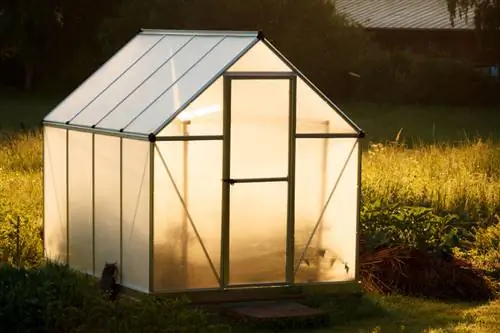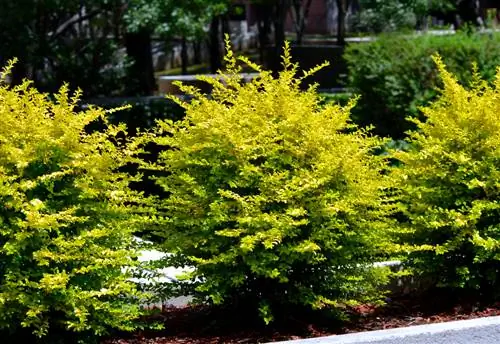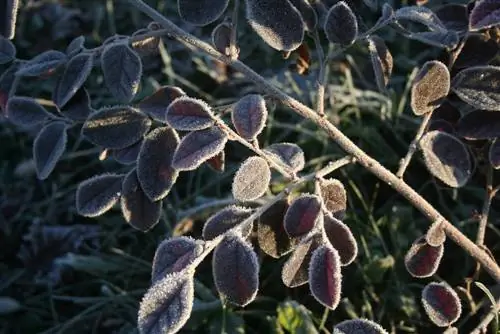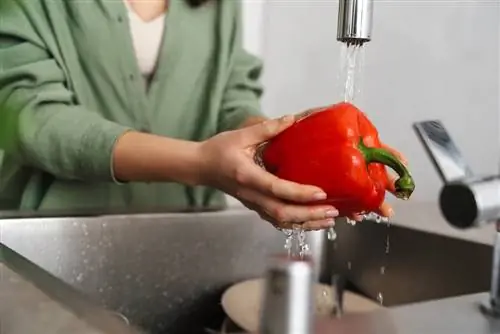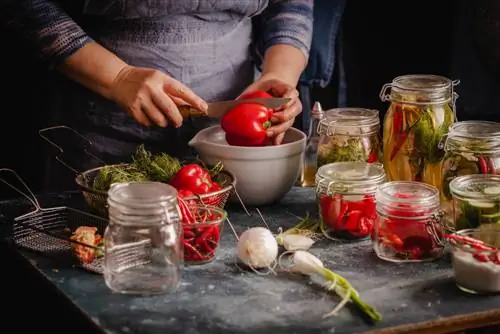- Author admin [email protected].
- Public 2023-12-25 17:45.
- Last modified 2025-06-01 06:02.
Peppers love warmth. They cannot survive temperatures below 5° degrees. They are not hardy. Due to the local climate, peppers can only survive the winter frost-free if they are brought indoors in good time.
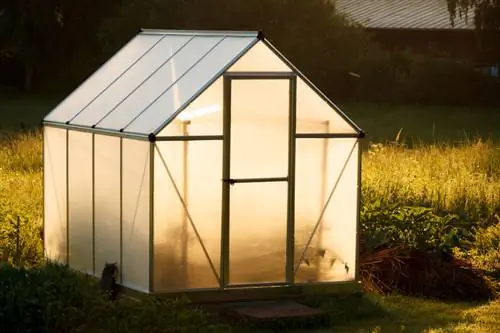
How to overwinter and care for peppers in winter?
In order to overwinter peppers successfully, they should be brought indoors before the first frost and stored in a bright, cool and frost-free room at around 10° degrees. At this temperature, pepper plants require less water and fertilizer. Regular watering, cutting and checking for pests will help keep the plant he althy.
How to prepare peppers for their winter quarters
After the last pepper harvest, the plants must move into their winter quarters in good time before the first frost. Overwintering peppers is easy - provided the peppers meet specific conditions in terms of care and location. Before the peppers come into the house, they should be prepared as follows:
- thoroughly rid of pests such as aphids or spider mites
- dispose of diseased or damaged plants
- Water and water the plants sufficiently again
What wintering options are there?
Bright, cool and frost-free rooms are the best winter quarters for peppers. The plant rests at an average temperature of 10° degrees. Watering is reduced to twice a week and fertilizing is not necessary.
In a room with a normal temperature at 20° degrees, the peppers continue to grow, bloom and produce fruit. Therefore, water weekly and fertilize once a month.
The right care when peppers overwinter
In principle, all types of peppers can be overwintered. The advantage: In the second year, peppers are often more productive and less sensitive. The following rules apply to winter care:
- Pests and diseases
- correct cutting and pruning
- Pouring
During the winter, peppers are susceptible to pests such as spider mites, aphids and diseases. This is further supported by dry heating air and wet soil. Check plants regularly and water them only moderately.
Cutting peppers correctly down to the woody areas creates space, promotes branching and new plant shoots. The more pruning, the fewer leaves. Therefore, water only a little. A lot of leaf mass supports winter photosynthesis. This means there is an increased need for water and nutrients. Winter watering: the darker and cooler the winter pepper location, the less water. Be sure to avoid waterlogging and always allow the soil to dry slightly.
When winter goes and spring comes
From February you can slowly prepare the peppers for the new outdoor summer. To do this, transfer the peppers to a new pot. Note that the diameter and depth are only slightly larger. Otherwise the plant will use too much energy to form new roots. Keep the substrate a little moister again and slowly water more. Fertilize more often from mid-May. If everything goes well, you will harvest significantly more peppers in the second year.
Tips & Tricks
Make sure there is enough humidity in the winter quarters. Peppers do not tolerate dry air. If necessary, set up a humidifier (€69.00 on Amazon) and spray plants with distilled water.

